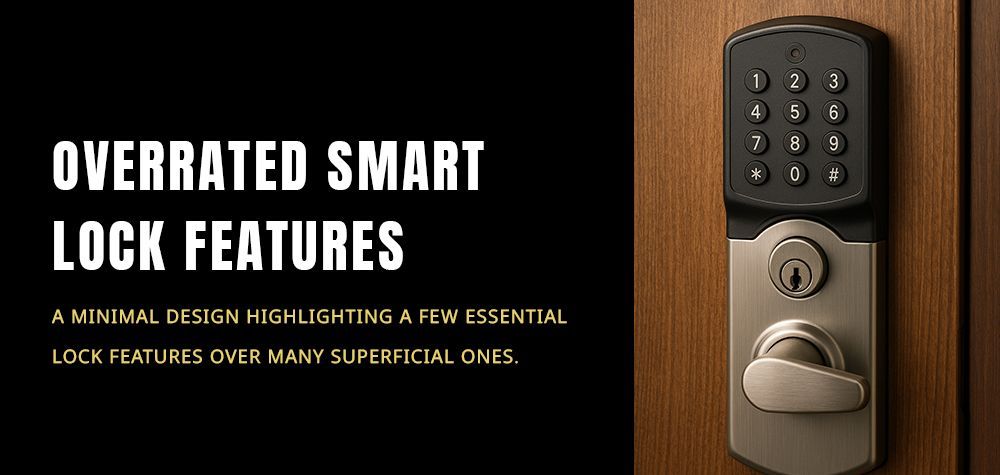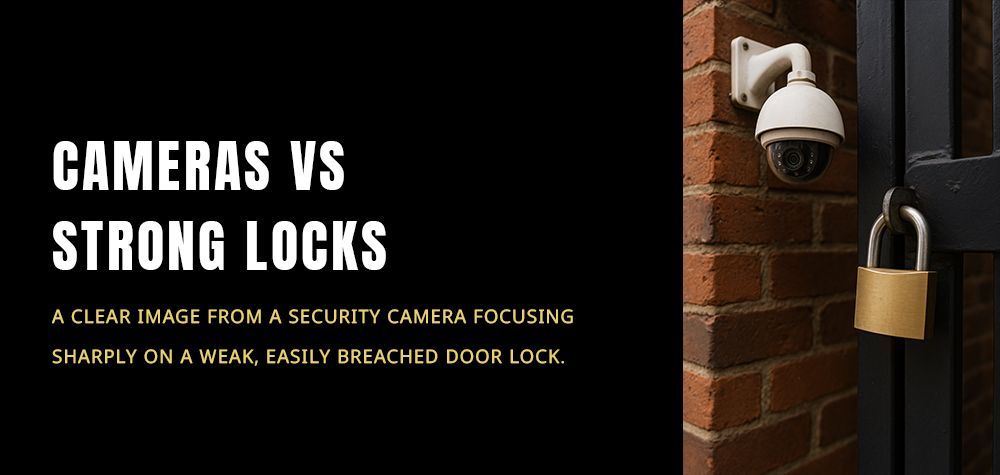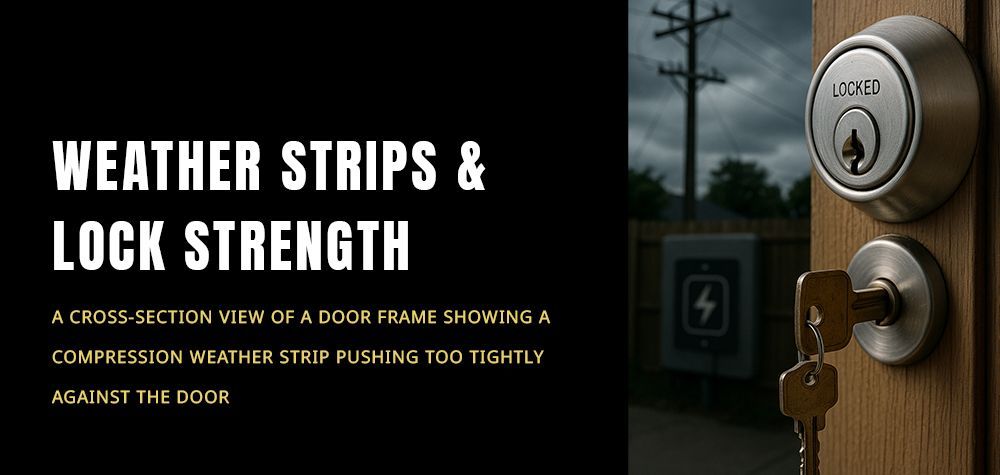What Is Lock Bumping and How to Prevent It at Home
In the quiet safety of our homes, we often feel protected from the chaos of the outside world. We lock our doors, trust our deadbolts, and assume our keys are the ultimate line of defense. But what if someone could break into your home in seconds—without a key, without breaking a window, and without leaving a trace? That’s exactly what lock bumping makes possible.
Lock bumping is a clever and disturbingly simple method used by burglars to unlock pin tumbler locks using a specially crafted “bump key.” While it sounds like something only professionals could pull off, the reality is that almost anyone with minimal knowledge and tools can do it—and that should concern every homeowner.
In this guide, we'll walk through what lock bumping is, how it works, why it's so effective, and—most importantly—how you can protect your home from it. Along the way, we’ll break down the risks, challenges, step-by-step prevention strategies, expert advice, and habits that can make a real difference.
Let’s get into it.
Are fingerprint door locks safe for families?
Understanding Lock Bumping: What It Is and How It Works
Lock bumping is a technique used to open traditional pin tumbler locks—commonly found on residential doors—without the original key. It relies on a specially modified key known as a bump key. This key fits into the lock just like a regular key but has all its ridges cut to the lowest possible point (also known as the maximum depth).
Here’s how it works: once inserted, the bump key is gently tapped (or "bumped") with a blunt object while applying slight turning pressure. This causes the pins inside the lock to momentarily jump, aligning them at the shear line—the point at which the lock cylinder can turn. In that split second, the intruder can open the lock, often within seconds.
What makes this technique so frightening is that it doesn’t require brute force. There's usually no damage, no noise, and no sign of forced entry. That means even your insurance company might question whether a break-in really occurred.
Why Are Homes So Vulnerable to Lock Bumping?
The reason lock bumping is so effective lies in the widespread use of pin tumbler locks. These locks have been the industry standard for decades, and most homes still use them today—especially on front doors, garages, and back entrances.
The simplicity of their mechanism, once considered a strength, now makes them the perfect target. If your home uses traditional deadbolts or knob locks without any modern bump-resistant features, it could be wide open to this type of attack.
Another issue is public knowledge. Thanks to the internet, tutorials and bump key kits are easily available. What was once locksmith-specific knowledge is now at the fingertips of virtually anyone. Combine this with cheap bump keys sold online, and you've got a recipe for silent break-ins.
Challenges in Detecting and Addressing Lock Bumping
One of the biggest challenges with lock bumping is that it's hard to detect. Unlike crowbar break-ins or shattered glass, bumping leaves no obvious signs. Police reports may list your break-in as “undetermined entry,” and insurance companies may push back on claims if they suspect negligence or lack of proof.
Another challenge is awareness. Most homeowners don’t even know lock bumping exists. They assume a locked door means safety. Without understanding the technique, they fail to upgrade their locks, making their homes easy targets without realizing it.
Finally, many standard lock manufacturers still produce bumpable models. Unless you specifically request high-security or bump-resistant hardware, your locks are likely not secure against this method.
Step-by-Step: How to Prevent Lock Bumping at Home
You don’t need to live in fear—but you do need to take action. Securing your home against lock bumping is entirely possible with the right strategy. Let’s go step by step through your options.
Step 1: Replace Basic Locks With Bump-Resistant Models
The most straightforward way to protect against bumping is to use locks specifically designed to resist it. High-security locks—like those from Medeco, Mul-T-Lock, or Schlage’s Primus line—use complex pin systems, sidebar mechanisms, or rotating disks that make bumping virtually impossible.
These locks can’t be opened with a standard bump key because the pins don’t respond to the same type of impact. While they cost more than generic deadbolts, the peace of mind and enhanced protection are well worth it.
Step 2: Install Anti-Bump Lock Devices
If replacing your entire lock system isn’t an option right now, there are add-on devices you can install for extra protection. Products like bump-resistant strike plates or anti-bump deadbolt guards can create a second layer of defense. These don't necessarily stop the bumping action but make it significantly harder for the intruder to manipulate the lock successfully.
These devices are easy to install with basic tools and can be purchased from most hardware stores or online marketplaces.
Step 3: Use Smart Locks or Keyless Entry Systems
Another effective step is moving away from traditional key systems altogether. Many smart locks use biometric scanners, keypads, or phone-based access, completely eliminating the use of pin tumblers and physical keys.
No physical key means no bumping. While these systems do come with their own cybersecurity risks, most are encrypted and offer far better protection against mechanical manipulation.
Make sure to choose models that offer two-factor authentication or automatic lock timers for added safety.
Step 4: Reinforce Doors and Frames
While bumping targets the lock cylinder itself, a weak door or flimsy frame can still be a liability. Reinforce your door frames with metal strike plates, solid cores, and heavy-duty screws. The stronger your entire entryway is, the less inviting it becomes for all types of break-ins—including bumping.
Combine door strength with secure lighting, motion sensors, and visible security cameras to complete the protective circle.
Real Risks Involved If You Ignore the Threat
It’s easy to brush off lock bumping as just another urban myth. But in reality, it poses serious risks—financial, emotional, and even legal.
Imagine coming home from work to find your door ajar, your valuables gone, and no sign of forced entry. It’s not just about lost possessions—it’s about the violation of your sanctuary. Victims of lock bumping often feel unsafe in their homes for months or even years afterward.
Then there’s the insurance dilemma. Without evidence of forced entry, claims can be denied or heavily scrutinized. The burden of proof suddenly falls on you, and if you haven’t taken reasonable security precautions, your provider might argue that you were negligent.
And finally, there’s the community risk. When one house is successfully bumped, others nearby often follow. Criminals tend to return to neighborhoods where they’ve found vulnerabilities.
Expert Recommendations for Lasting Protection
Professional locksmiths and home security experts offer a few key insights:
First, always ask your locksmith about bump resistance when installing or upgrading locks. Don’t assume newer equals better—some models may still be vulnerable if they’re not specifically designed to prevent bumping.
Second, think holistically. Protecting your home isn’t just about one lock—it’s about layers. High-security locks, solid doors, surveillance systems, lighting, and alert neighbors all play a role in making your home a harder target.
Finally, stay informed. Security threats evolve. What protects you today may not work in five years. Make lock checks and upgrades part of your regular home maintenance routine.
Practical, Preventive Habits You Can Start Today
Even if you can’t overhaul your security system overnight, there are small habits you can adopt right now to reduce your vulnerability.
Check your doors regularly. Do the locks feel loose? Do you know the brand and model? Look it up and see if it’s bump-resistant.
Avoid giving out spare keys unnecessarily, and be cautious about where you hide them. If someone has access to your key, they can make a bump key without you knowing.
Keep outdoor areas well-lit and install motion detectors. Burglars rely on darkness to operate unnoticed, and visible lighting can discourage tampering.
Lastly, talk to your neighbors. Community watch and awareness can be powerful deterrents. The more informed your neighborhood is, the less attractive it becomes to criminals.
Conclusion: Don’t Wait for a Break-In to Take Security Seriously
Lock bumping is a silent, sneaky, and surprisingly simple method that could compromise your home’s safety. But it’s not an unstoppable threat. With awareness, the right locks, and proactive habits, you can safeguard your space and sleep soundly.
Security doesn’t come from fear—it comes from preparation. If you haven’t looked at your locks in a while, now’s the time. It’s not just about keeping people out. It’s about keeping peace of mind in.
Call Us Any Time!






